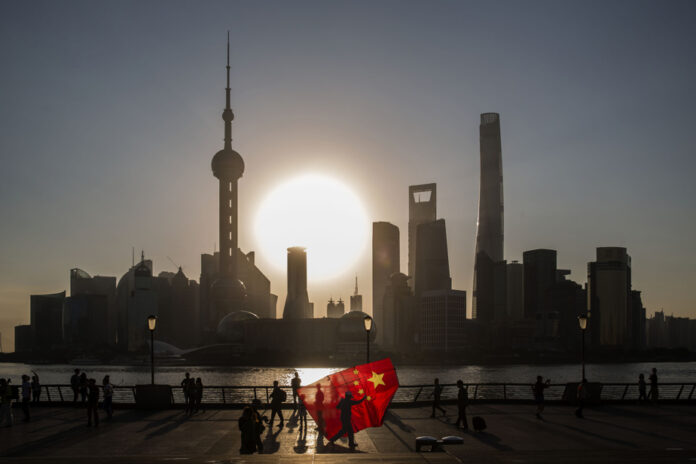(Beijing) Unlike major inflation-fighting economies, China entered deflation on Wednesday for the first time in more than two years, weighed down by sluggish domestic consumption that complicates economic recovery.
Deflation is the opposite of inflation, i.e. falling prices of goods and services.
While on paper this may seem like a good thing for purchasing power, deflation is a threat to the economy. Because instead of spending, consumers are postponing purchases in hopes of more price cuts.
For lack of demand, companies are forced to reduce their production and agree to new discounts to sell off their stocks, while they freeze hiring or lay off workers. Economists then speak of a harmful spiral.
China’s consumer price index, the main gauge of inflation, fell 0.3% year on year in July, according to the National Bureau of Statistics (NBS).
Analysts polled by the Bloomberg agency anticipated a decline in prices (-0.4%), after zero inflation a month earlier.
By way of comparison, inflation was 4.5% in France in June and 3% in the United States.
“Deflation reflects the reality of China’s faltering recovery and the need for a strong stimulus package to stimulate insufficient demand,” observes analyst Ken Cheung of Japanese bank Mizuho.
Many economists recommend such a remedy plan to support activity.
But the authorities are sticking for the moment to targeted measures and declarations of intent with regard to the private sector, without conclusive results.
These poor figures risk “putting pressure” on the government to reconsider this approach, supposes economist Zhiwei Zhang, of Pinpoint Asset Management.
“These numbers are bad, but are they bad enough to prompt Beijing to take further action immediately? asks analyst Tim Waterer skeptically for broker KCM Trade.
China experienced a short period of deflation at the end of 2020-early 2021, due to the collapse in the price of pork, the most consumed meat in the country.
The previous one dated back to 2009.
Many analysts fear a longer period this time around, as China’s main growth engines seize up and youth unemployment hits a record high of over 20%.
The crisis in real estate, a sector that has long accounted for a quarter of China’s GDP, is the “main” reason for this “deflationary shock”, estimates economist Andrew Batson of the firm Gavekal Dragonomics.
For its part, the producer price index contracted again in July (-4.4%) for the tenth consecutive month, according to the SNB.
This index, which measures the cost of goods leaving factories and provides an overview of the health of the economy, was already down 5.4% in June.
Producer prices in the red mean reduced margins for companies.
These indicators are published the day after disappointing figures for Chinese exports, traditionally an important lever for growth.
They experienced their strongest decline in a year in July (-14.2%), penalized by weak demand abroad, according to official figures released on Tuesday.
This situation has a direct impact on tens of thousands of businesses that are now operating in slow motion.
The economic situation threatens the growth target set at around 5% for this year by the government.
Chinese growth only increased by 0.8% between the first and second quarters of 2023, according to official figures.
In the meantime, China has ordered its economists not to report overly alarmist news, especially on deflation, say the British business daily Financial Times and the Bloomberg agency.















